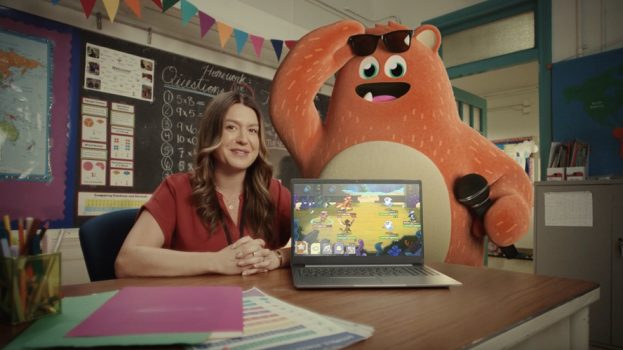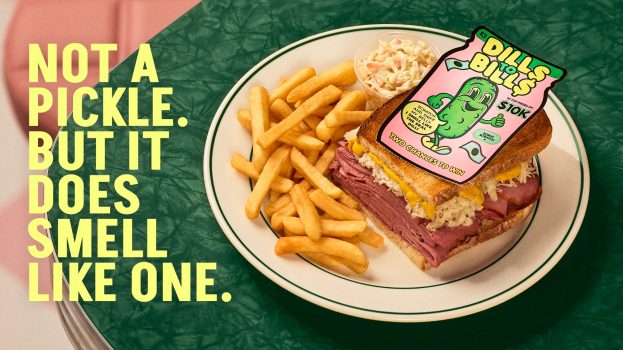‘Tweens are not a homogenous group. It’s not a label.’
While most marketers would agree with this message from Michele Erskine, director of research and managing partner at Toronto-based research and media firm Youth Culture Group, many fail to acknowledge that the lucrative eight- to 14-year-old group can sometimes be better reached through niche lifestyle or special-interest magazines than through tween-targeted publications.
Through her focus groups, Erskine (who recently bought out Youth Culture along with co-managing partner Kaaren Whitney-Vernon) found that tweens read many different magazines to suit their interests, which range from skateboarding to computer games.
‘As with adults, tweens have a huge number of diverse and varied interests, and within that age category, boys and girls are very different,’ she says. ‘If kids are interested in fashion, they’ll pick up a fashion mag, and if they’re interested in skateboarding then that’s what they’ll buy.’
Marketers recognize that despite the overwhelming number of media vehicles available to kids these days, from the Internet to video games, magazines are still a viable medium for reaching tweens. (A recent study conducted by Strategic Navigator and Northstar Research, funded by Toronto’s Paton Publishing, found that 90% of Canadian tweens ages eight to 14 read at least one magazine per week.)
However, while most magazines are designed to target readers with an interest or outlook in common, the tween demo is more commonly targeted by age than by any other factor, a fact that may be limiting to a number of tween-targeted marketers.
The opportunities for print advertisers to target this lucrative demo by interest rather than by age are evident, Erskine says, although she adds that it is important to marry a lifestyle product to the magazine content. ‘If you’re a sports brand you can reach tween sports fans through a sports mag, just as you can reach adult sports fans,’ she says.
Beverley Paton, president and publisher at Paton Publishing, agrees: ‘When Kraft launched its Post NHL cereal they chose PowerPlay [published by Paton] as a vehicle to communicate the launch because of the sports theme. It always makes a more impactful and interactive message if there is a relevant connection.’
Among its findings, Paton’s report shows that 62% of tweens might buy something they saw advertised in a magazine. ‘Kids expect to see ads when they read mags and they love to see hot new products,’ says Paton.
However, from the buyer’s perspective, the lack of conclusive data to indicate that tweens are reading outside of their age-targeted publications is a limiting factor. Robert Brown, VP, group media director at Toronto-based MediaVest Worldwide, believes that while it is probable that tweens are reading special-interest mags, it may be premature to try and capture that group through niche mags without more conclusive research.
‘It would be nice to see a more enriched pool of information on kid media usage in general,’ he says, adding that cost is likely to be the reason for the lack of data on this topic. ‘The budget for kids’ brands is often lower than adult brands, so marketers prefer to put their ad dollars into kid-targeted media which is typically less expensive,’ he says.
But while mags designed for tweens may cost less than adult magazines with equivalent circulations, many niche mags cater to smaller, better-defined readerships and thus actually cost less than the tween mags. For instance, a full-page four-colour ad costs just $1,198 in bike moto cross niche mag Chase BMX and $3,500 in SBC Skateboard, compared to $7,500 in teen-targeted Faze mag and $15,000 in Paton’s POP! Magazine – although Faze and POP!’s circulation figures of 250,000 and 325,000 respectively are significantly higher than the niche pubs. (For a list of pubs popular with tweens, see ‘Niche mags with tween readers’ on page 16.)
The decision whether to go niche should also depend on what that niche is, according to Pascale LeBlanc, founder of Toronto-based youth marketing consultancy Youthopia, as certain subjects are more age-specific than others.
‘When it comes to fashion, kids are more likely to read mags addressed to their own age or to older teens because they want to wear what’s cool for their age group, not what’s cool for women in their 40s. But with almost any other subject, common interest is more important than age.’
Music and sports magazines are two prime examples of subjects with a very broad range of reading ages, LeBlanc says. ‘It’s the same with all trends. If you’re an extreme golf fan it doesn’t make a difference if you’re 12 or 45. That’s why it’s so hard to market to kids, because you can’t narrow down their interests to a small group.’
Snowboard Canada and SBC Skateboard are two special interest mags with a large tween following, according to LeBlanc’s research.
Steve Jarrett, president of the mags’ Toronto-based publishing company, SBC Media, confirms that 16% of SBC Skateboard’s readers fall into the 10-to-16 category, while Snowboard Canada falls shorter with 11% of its readers in that age group.
Both publications aim to target tweens with their editorial content and promotions, although Jarrett feels that many marketers are not taking full advantage of the opportunities to promote their products.
‘I think both magazines have been underutilized as media for reaching tweens,’ he says. ‘A lot of advertisers think that it would be hard to get creative with any resonance in this category but in fact the opportunities are vast.’ However, Jarrett adds that since the sports have started to gain recognition in the mainstream, the number of calls from ad buyers has increased.
Le Blanc’s research also found Chase BMX to be a popular special interest mag among the playground crowd.
‘I know a lot of our readers are in their 20s but it wouldn’t surprise me to learn that we had a good following from kids as young as eight,’ says Jamie McIntosh, manager of Port Coquitlam, B.C.-based World Bicycle Sports (publisher of Chase BMX), adding that as the mag is distributed free in bike shops, it has not been possible to measure reader age. ‘It’s written for anyone that has a passion for the sport, regardless of age,’ he says.
And while most of the mag’s advertisers are primarily targeting readers in their late teens or early 20s, McIntosh believes that it does in fact offer a fertile ground for younger-skewing marketers. ‘There are definitely a lot of young kids picking up the mag so the opportunity is there for advertisers to reach them with different products.’
Andrew Turner, president of Toronto-based youth marketing consultancy Bat Cave, agrees that the magazines read by tweens extend far beyond those designed for the age group.
‘Some mags like PC Gamer and Transworld [a magazine and Web site for skateboarders] appeal to a niche audience that encompasses a very broad age group, and tweens are definitely included in that. We see a lot of kids these days laying down the dollars to buy a skating mag because there is nothing on that subject that would cater to their age group,’ he says.
Turner believes that the opportunity exists for marketers to reach tweens through some of these special interest titles, although he advises doing some research into who is actually reading the mags, not just buying them blind. ‘Cost is a big issue for this age group, so you’ll probably find a young boy won’t want to spend his money on a copy of Transworld, but if his older brother is buying it, chances are he’s reading it too.’
Niche mags are the ideal medium for targeting young males, according to Simon Whitcombe, publishing director at Imagine Media, the Brisbane, Calif.-based publisher of PC Gamer, Official Xbox Mag and PSM (PlayStation Mag). ‘Statistics show that young males don’t read a great deal,’ he says. ‘They are a screen generation with video gaming being the number one pastime in North America, so they are going to check out the ads,’ he says.
Although the average PSM and Official Xbox Mag reader is aged 20 to 21, Whitcombe says that these publications also receive significant readership from the kid and tween demographics, with as much as 28% falling into the under-16 age group. The mags carry a lot of ads for movie theatre and teen fashion companies, which are frequently accompanied by contests and promotional opportunities. Whitcombe believes that other products, such as soft drinks, snacks, fast foods and hygiene products, would be well placed in these mags to reach the younger readers.
And while PC Gamer is skewed towards a slightly older reader, it does have a 15% following in the under-16 group.
For tween girls, Jane, 17 and Cosmo are popular reads, according to Turner. ‘Girls tend to aspire upwards and read mags that are really intended for young women. They want to know what happens when they hit their 20s.’
However, Eva Dillon, publisher of Fairchild Publications’ New York-based mag Jane, is unaware that the mag is read by such young girls, as the number of under-18 readers has never been measured. ‘All of our advertisers are targeting the 18-plus group,’ she says, although she does concede that ‘some may well be benefiting from younger readers reading up.’
And for the die-hard music fans, Toronto-based Chart Magazine is another mag that LeBlanc has found to be popular among the tweens. Co-publisher Edward Skira, says it is primarily aimed at the 15-plus demographic, although the mag does have subscribers as young as 10. Advertisers include fashion, perfume and movie companies, as well as music labels.
What I read
Eugene Chiu, age 11, Thornhill, Ont.
‘I don’t subscribe to any magazines but I often buy Tips & Tricks and Expert Gamer [both video game mags]. Tips & Tricks is my favourite. I usually spend about 30 minutes reading it the first time but then I come back and look at it again. With Expert Gamer I usually read the whole thing straight through.
‘My Mom subscribes to Time mag and I sometimes spend about 20 minutes reading that as well. It has some good information about events that I should know about.
‘I quite like looking at the ads in magazines and sometimes I buy something if it looks good.’
Rosanne Canto, age 13, Markham, Ont.
‘There are four magazines that I read regularly. My favourite is MacNut [an online monthly pub promoting Mac hardware and software], which I subscribe to. The others, Teen People, 17 and YM, I don’t buy myself but I read at the library.
‘I like looking at the ads and sometimes I might buy something that I’ve seen advertised if it looks interesting.’
Niche mags with tween readers
Snowboard Canada
Published: Monthly
Subject: Snowboarding
Targets: Snowboarders and fans of the sport
Total circulation: 70,000
Number of tween readers (10 to 16): 7,700 (11%)
Tie-in opps: Advertisers can hold sampling programs at SBC snowboarding events such as Snow Jam, as well as exposing their products through magazine contests.
What’s new: Music and video game reviews.
SBC Skateboard
Published: Monthly
Subject: Skateboarding
Targets: Skateboarders and fans of the sport
Total circulation: 35,000
Number of tween readers: (10 to 16): 5,600 (16%)
Tie-in opps: See Snowboard Canada.
Chase BMX
Published: Four times per year
Subject: BMX chat, music
Targets: Die-hard BMX riders
Total circulation: 13,000 distributed free in bike shops (reader ages not measured)
Tie-in opps: Contests and giveaways with record companies, clothing brands and bike part manufacturers.
What’s new: Recently increased the number of pages from 48 to 72 as part of a drive to increase ad revenues. Also added a centre-page poster.
PSM
Published: Monthly
Subject: Sony PlayStation 2
Targets: Gaming console fans
Total circulation: 400,000
Number of readers under 16: 112,000 (28%)
Special features: Game previews and reviews
Tie-in opps: Contest pages and other promotional opportunities with marketers such as movie theatres and apparel manufacturers.
What’s new: Fifty per cent of June issues came packaged with a free DVD containing game previews and demos. If the promo is successful it will be rolled out in future issues, providing marketers with the opportunity to put interactive ads on the disc.
Jane
Published: Monthly
Subject: Women’s lifestyle (beauty, fashion, travel, music, pop culture, etc.)
Targets: Twentysomething women
Total circulation: 650,000
Number of readers under 18: not measured
Number of 18-to-24 readers: 260,000 (40%)
Number of 25-to-34 readers: 260,000 (40%)
Special features: ‘Jane’s diary,’ ‘Fly on the Wall,’ as well as book, music and movie reviews.
Tie-in opps: ‘I Gotta Have It’ allows marketers to promote their products online and offer products as prizes and incentives. An ongoing contest tie-in with Maybelline invites readers to submit original music in a bid to win a trip to a recording studio in L.A. to produce a CD for release in the fall.
What’s new: A regular new feature, ‘Jane needs Help,’ turns the traditional agony aunt column on its head, with readers asked to give advice to Jane.
Chart
Published: Monthly
Subject: All kinds of music, primarily focusing on alternative
Targets: Anyone who loves music
Total circulation: 40,000
Number of tween readers (8 to 14): Not measured
Number of teen readers (15 to 17): 13,200 (33%)
Number of adult readers (18 to 24): 16,000 (40%)
Tie-in opps: Eight to 10 contests in each issue, often tied in with music companies. One recent contest with Mountain Dew offered readers the chance to win Raptors basketball tickets.
What’s new: Recently added additional pages with more editorial coverage of mainstream music.
PC Gamer
Published: Monthly
Subject: Computer gaming
Targets: Gaming fans, predominantly males aged 18 to 34
Total circulation: 360,000
Number of readers under 16: 54,000 (15%)
Tie-in opps: Every issue comes packaged with a CD-ROM containing game demos and a review index of games covered by the mag, presenting further advertising opportunities.























